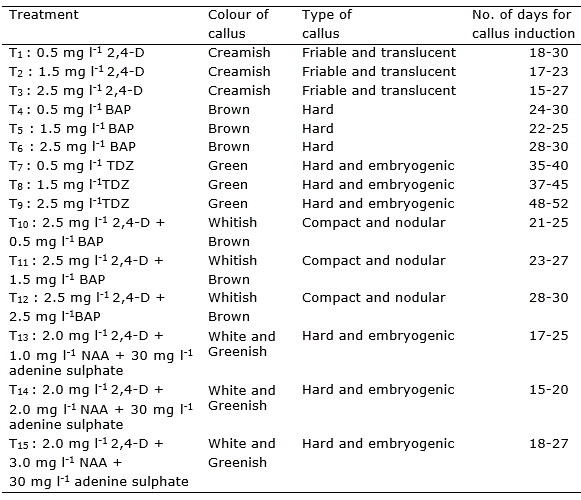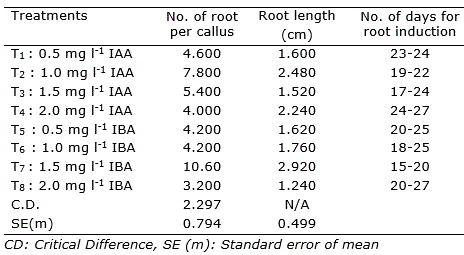INTRODUCTION
Genus Viola include 400 species which commonly known as Sweet Violet. It belongs to family Violaceae. It is native from Europe and Asia and distributed in Kashmir and (Mabberley, 1987). Viola odorata L. is conventionally cultivated by rhizomes but for large propagation seeds are preferred. It is evergreen perennial herb growing about 10 to 15 cm. Viola odorata L. is well known for medicinal use in unani and Aurvedic system. It is considered as rare and endemic parennial plant to Europe and Asia (Mabberley, 1987).
Viola odorata L. is medicinally important plant used in folk therapy for different diseases like diabetes, cancer, post-operative tumor, bronchitis and common digestive disorders. In traditional medicine it has been used in insomnia, low blood pressure (Duke et al., 2002) and anxiety (Keville, 1991). Different groups of phytochemical compounds have been isolated from Viola odorata L. like glycosides, triterpenoid, flavonoid, cyclotides and alkaloids (Darwin, 2010).
Plant biodiversity and natural resources are reducing day by day because of over exploitation on the earth, especially medicinal plants for pharmaceutical purpose. So, to maintain the biodiversity, conservation of medicinal plants is required (Cragg and Newman, 2001). Viola odorata L. is one of them. By using the active constituents from Viola odorata L. herbal drug “ODORATA” has been formulated into syrup. Hence, the development of tissue culture methods to achieve the production of true-to-type plants and to improve species using genetic engineering techniques has gained in importance. Tissue culture has now become a well-established technique for the conservation of rare and endangered medicinal plants (Neelima et al., 2010).
Callus induction of Viola odorata L. was studied by using MS media supplemented with different growth regulators. When MS media supplemented with 2,4-D (2.5 mg l-1) + NAA (2 mg l-1) highest callus frequency (80%) was observed on leaf explant. Also, on the media containing 2,4-D (2.5 mg l-1) + NAA (1 mg l-1), 2,4-D (2.5 mg l-1) + NAA (1.5 mg l-1) and 2,4-D (2.5 mg l-1) + NAA (3 mg l-1) the frequency of callus induction was high (Mokhtari et al., 2015). Callus induction was higher in leaves compared to stem and petiole. Young and green explant responded more than older explant. Besides, when half strength MS media supplemented with BA (2.5 mg l-1) and 2, 4-D (0.15 mg l-1) induced dark green, compact and larger callus within 40 days (Naeem et al., 2013). It has been proven that callus culture can be used as an effective method for multiplication of medicinal plants (Castillo and Jordan, 1997).
The callus culture has several applications. Antioxidants play an important role to neutralize free radicals, prevention of cancer, neurodegenerative diseases and cardiovascular diseases. Medicinal plants are the source of antioxidants (Gerber et al., 2002; Di and Esposito, 2003). For instance, an assay of the antioxidant potential of the in vitro grown callus and the wild plant extract was determined by DPPH (α, α-diphenyl-β-picrylhydrazyl) method shown that the antioxidant activity of in vitro formed callus is higher than that of wild plant (Naeem, 2013).
Considering the importance of V. odorata as medicinal plant and source of different secondary metabolites which have medicinal values, the aim of this paper was to develop a protocol for callogenesis and rhizogenesis in V. odorata. In this regard there no prior studies about rhizogenesis from callus in this specie.
MATERIALS AND METHODS
Collection of plant material
Young and healthy plants of Viola odorata L. were collected from Sanjeevini vatika of Department of Horticulture, University of Agriculture Science, GKVK Bangalore - 65, India.
Preparation of explants
Young and healthy leaf and petiole of Viola odorata L. were used as an explants. The excised leaf and petioles were washed in running tap water for at least 20 minutes and later washed with distilled water. After that, petiole and leaf were separately treated with 0.3% Bavistin and one or two drops of Tween 20, during 15 min. Later, the explants were rinsed with sterile water thrice, each for 5 min and it were disinfected with 0.1% mercuric chloride solution for 5 min. Finally, the explants washed with sterile water twice for removing the traces of HgCl2.
Callus formation and rooting
To induce callus formation from explants and its rooting, the MS media (Murashige and Skoog, 1962) was supplemented with cytokinins 6-Benzylaminopurine (BAP) and Thidiazuron (TDZ) and auxins 2,4-Dichlorophenoxyacetic acid (2,4-D), Napthalene acetic acid (NAA), Indole butyric acid (IBA) and Indol acetic acid (IAA). pH of the medium was adjusted at 5.8 and prior to sterilization by autoclave and 0.6% agar agar was added for solidification (Himedia, Mumbai). Then, the media were autoclaving at 1.05 kg cm-2 (15 psi) of pressure for 30 min.
The explants were cut into 1.0 cm small pieces, cultured on MS basal medium alone, and supplemented with different types of auxins (0.5, 1.5, 2.5 mg l-1 2,4-D or 1.0, 2.0, 3.0 mg l-1 NAA) and cytokinins (0.5, 1.5, 2.5 mg l-1 BAP or 0.5, 1.5, 2.5 mg l-1 TDZ). Obtained callus was transferred on rooting MS media with IAA or IBA (0.5, 1.0, 1.5, 2.0 mg l-1 IAA or 0.5, 1.0, 1.5, 2.0 mg l-1 IBA).
The explant for callus formation and callus for induction of rooting were incubated under at 25 ± 2 °C and light (16 hours light and 8 hours dark). The observations were recorded after 60 days of culture (callus induction) and 40 days (root induction).The experiment consisted of 15 treatments. Each treatment included two explant per bottle and they was replicated 10 times. Details regarding color of callus, type, number of days for callus induction, fresh weight of callus (g) and dry weight of callus (g), number of days for root induction, number of root and root length (cm) were recorded.
Statistical analysis
The results were analyzed with one way analysis of variance (ANOVA) (t≤0.05) using completely randomized design (Panse and Sukhatme, 1985). The difference between treatments were compared with LSD (least significance different). The standard error of the mean and critical difference were calculated using the formula SE(m)±=√2SEM/r and CD (0.05) = SE (d) x table value of t (0.05) at error degree of freedom.
RESULTS AND DISCUSSION
The study showed that addition of plant growth regulators (PGR) in the MS medium at different concentrations induced several responses in leaf and petiole explant. All the PGR induced calli formation with different characteristics but, different concentration of same PGR induced with callus with same characteristics.
Different concentration of 2,4-D alone produced friable and translucent callus with creamish colour but induced in different days. The maximum (2.5 mg l-1) caused the earliest callus induction (Figure 1, Table 1). In this sense, Narayani et al. (2017) found that half MS supplemented with 1.5 mg l-1 2,4-D produced beige compact callus from petiole explant after 100 days of culture, while leaf explants produced beige friable callus within 120 days. In this work, the time for callus induction in all treatments was shorter.
On the other hand, the use of different concentrations of BAP resulted in hard and brown callus. BAP at 1.5 mg l-1 induced callus earliest (Figure 1, Table 1). Different concentration of TDZ resulted hard and embryonic callus with green colour (Figure 1). The use of 2.5 mg l-1 2, 4-D + 2.5 mg l-1 BAP induced whitish brown compact nodular callus within 28-30 days. Naeem et al. (2013) reported that 2.5 mg l-1 BAP + 0.15 mg l-1 2,4-D induced dark green compact callus in 40-45 days. White and greenish, hard and embryogenic callus was induced by 2.0 mg l-1 2, 4-D + 30 mg l-1 adenine sulphate with NAA (1.0, 2.0, 3.0 mg l-1 (Figure 1, Table 1). In previous experiment, in in vitro regeneration of Viola patrinii, combination of 16.12 μM NAA with 13.33 μM BA resulted in maximum callus induction in terms of the percentage of calli (Gururaj and Uddagiri, 2012). Other authors demonstrated that after one month of culture on MS + 2 mg l-1 KIN + 2 mg l-1 2,4-D callus induction medium, yellowish amorphous callus tissue proliferated on the cut edges of petiole explants and on the cut edges and surface of leaf explants but, after two month of culture the response rate for both explant types was high, reaching 84.9% for petiole and 73.4% for leaf (Blazej et al., 2014).
Combined 2,4-D and BAP showed highest callus fresh weight (8.093 g) at (2.5 mg l-1 2,4-D+ 2.5 mg l-1 BAP) while lowest (0.613 g) was recorded with 2.5 mg l-1 2,4-D+ 0.5 mg l-1 BAP)(Table 2). In the case of dry weight, 2,4-D combined with BAP showed highest value (0.073 g) while lowest (0.051g) was obtained with 2.5 mg l-1 2,4-D+ 0.5 mg l-1 BAP (Table 2).

Figure 1. Callogenesis and rhizogenesis of Viola odorata L. (a) Creamish and translucent callus on 2.5 mg l-1 2,4-D, (b) Brown callus on 2.5 mg l-1 BAP, (c) Green callus on 2.5 mg l-1 TDZ, (d) Brown whitish callus on 2.5 mg BAP and 2.5 mg l-1 2,4-D, (e) Whitish green callus on 2 mg l-1 NAA and 2 mg l-1 2,4-D + 30 mg l-1 adenine sulphate, (f) Induction of root on 0.5 mg IAA from callus of petiole, (g) Induction of root on 1.5 mg l-1 IBA from callus of petiole, (h) Induction of root on 1 mg l-1 IAA from callus of petiole, (i) Induction of root on 1.5 mg l-1 IAA from callus of leaf, (j) Induction of root on 1.5 mg l-1 IBA from callus of leaf, (k) Induction of root on 2 mg l-1 IBA from callus of petiole.
Table 1. Effect of BA, NAA, 2,4-D and TDZ on callus induction of Viola odorata L., after two months of in vitro culture in media with different concentration.

Table 2. Fresh weight and dry weight of callus of Viola odorata L. (leaves and petioles), after 60 days of in vitro culture in media with different growth regulators.

Table 3. Number of root, root length and number of days for root induction of Viola odorata L. from callus, after 40 days of in vitro culture in media with different growth regulators.

Among the different concentration of IAA maximum number of root per callus (7.800) and root length (2.480 cm) were obtained with 1.0 mg l-1 after 19-20 days of culture (Figure 1). Also, different concentration of IBA induced roots in callus. Maximum number of roots (10.60) and root length (2.920 cm) were observed with 1.5 mg l-1 IBA (Figure 1, Table 3). The results was in accordance with previous reports in other Viola species such as Viola serpens Wall. (Vishwakarma et al., 2013) inoculated petiole explants on full strength and half strength MS media supplemented with IAA and IBA. Both PGR, IAA and IBA induced callus rooting, but percentage of rooting was less in IAA.
This study reveals in vitro callogenesis and rhizogenesis of Viola odorata L. Experimental results showed that among all treatments, 2,4-D used in higher concentration resulted in earliest callus induction. Besides, combination of 2.0 mg l-1 2,4-D + 2.0 mg l-1 NAA is needed for production of callus with embryogenic structures within a short time period. TDZ also produced embryogenic callus but, it takes more time.
CONCLUSIONS
Viola odorata L. is important medicinal and ornamental herb used in Unani medicine. It can be propagated by tissue culture techniques. The use of leaf and petiole explants for callus induction and rhizogenesis in culture medium supplemented with several combinations of growth regulators achieve callus and roots. For producing large amount of callus, 2.5 mg l-1 2,4-D+ 2.5 mg l-1 BAP is recommended. Present study reveals that this protocol could be used for in vitro callogenesis and rhizogenesis of V. odorata.















